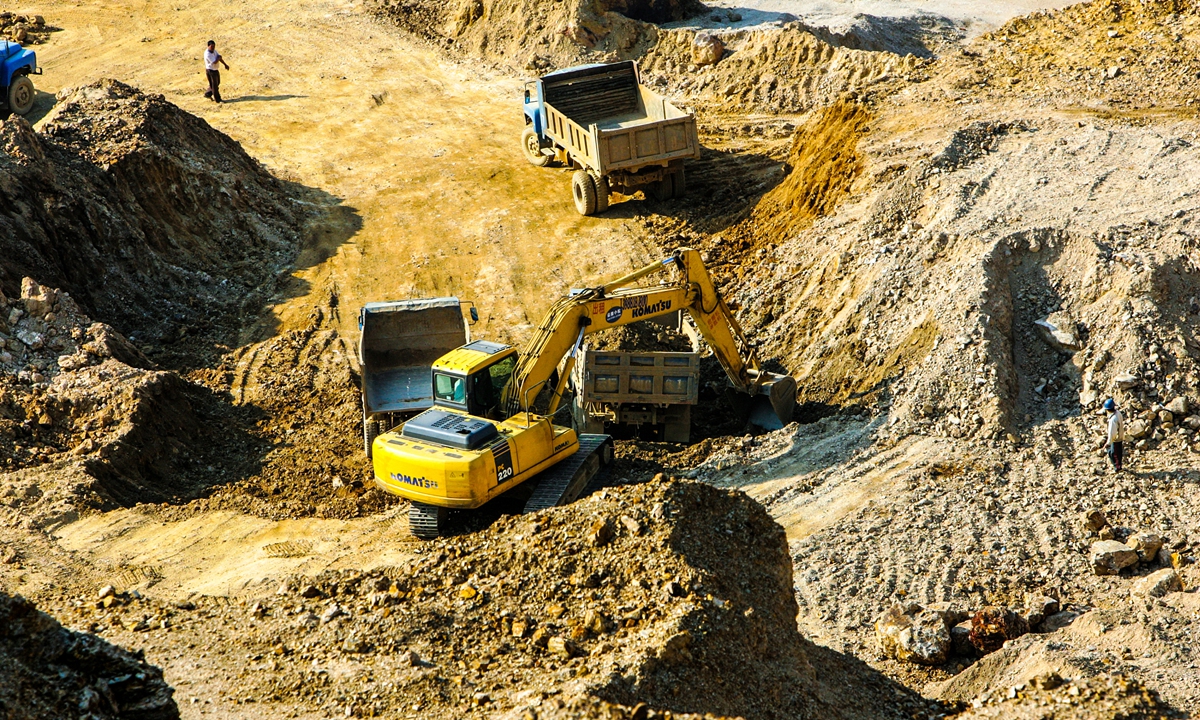SOURCE / MARKETS
China’s rare earth still needs an edge up in technology for high-end products

Rare earth. Photo: VCG
China is the world’s biggest supplier of rare-earth elements, the crucial component in an array of high tech and military applications. However, due to a lack of technology patents – which would transform the production chain from mining and extraction to more value-added products – the industry continues to be cursed by thin margins and illegal mining and exports.
China’s mines account for about 70 percent of global output and are the most important sources of rare-earth elements for many countries. According to US government statistics, from 2014 to 2017, the US sourced 80 percent of its rare-earth imports from China.
The Bayan Obo Mining District in North China’s Inner Mongolia Autonomous Region is often regarded as the biggest rare-earth mine in the world, with 17 different rare-earth elements, although its exact output is yet to be determined.
However, when first discovered, the Bayan Obo mine was primarily treated as an iron mine, with the rare-earth elements considered to be less significant by-products. Although extraction technology advanced a great deal in the 1970s, the mine and its products are still largely undervalued due to the lack of high-end production technology.
The Bayan Obo mine represents a tip of an iceberg of the rare earth industry in China. According to an industry insider surnamed Zhong based in Ganzhou, East China’s Jiangxi Province, for the downstream processing techniques of the rare-earth elements, Japan still holds the most patents, and most of China’s exports to overseas are still restricted to semi-processed products such as rare earths purified from oxide compounds.
“One of the more advanced products from the rare-earth industry is the permanent magnets,” Zhong said: “About 70 percent of rare-earth metals are used in magnets that are needed in almost everyone’s daily lives. These metals are used in electronics, airplanes, mobile phones and even medical products such as ventilators.”
To produce more value-added rare-earth products, Chinese companies still needs to pay countries including Japan and the US for technology patents. According to an expert from China’s industry association for rare-earth production, the lack of high-end technology patents is still a huge hurdle in China’s development in the industry.
Apart from the lack of the high-end processing technologies, smuggling and illegal mining has also been cutting into the thin margins of China’s rare-earth industry. To control the total amount of rare-earth material exports and production, China has imposed a strict quota on mining, but according to a report by the Xinhua News Agency, in 2019, despite a quota of only 132,000 tons, the actual mining amount exceeded this number by a large margin, most of it mined illegally.
With efforts to crack down on illegal mining, as well as to protect the environment, China has also been adjusting its domestic mining quota and has opted to import more from other countries, such as Myanmar, according to Chen. This year, China’s exports of rare earths plunged to one of its lowest levels, raising widespread concern that China might use the vital material for geopolitical purposes.
According to government data, China’s rare earths export recorded a year-on-year slump of around 44 percent in September, narrowing from a more than 60 percent drop in the previous two months. The total export volume in the first eight months of the year recorded only 24,377.8 tons, a far cry from the previous year’s tonnage.
However, according Liu Enqiao, senior energy analyst at Beijing-based Anbound Consulting, the fluctuation of China’s export is a combination of China’s shift from large-scale, low-value resource selling to upgrading its technology, as well as shrinking global demands amid the pandemic and the US’s increasing imports from countries like Myanmar.
Around 80 percent of the rare earths in the US came from China during 2015-2018. However, the US last year restarted operations at its own mines and started to increase imports from other countries.
Liu told the Global Times that China’s rare-earth elements, especially the heavy rare-earth material, have the potential to greatly affect the global supply chain – especially the production of high-end technology products – if China decides to put more limits on its exports. For the US, to establish a supply chain that has been dominated by China for the past decades will take a long time.
“The volatility of China’s export has given rise to concerns that it might be used for geopolitical purposes,” Liu said, “although the recent decline in exports was because of the weakened global demand for rare-earth elements as the economic slowdown hit so many countries. The demand for Chinese rare earth will come up again when economy begins to resume.”
Global Times

